#chaos dragon gaav
Text
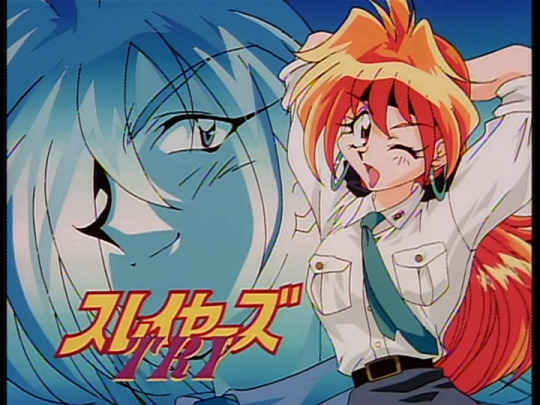

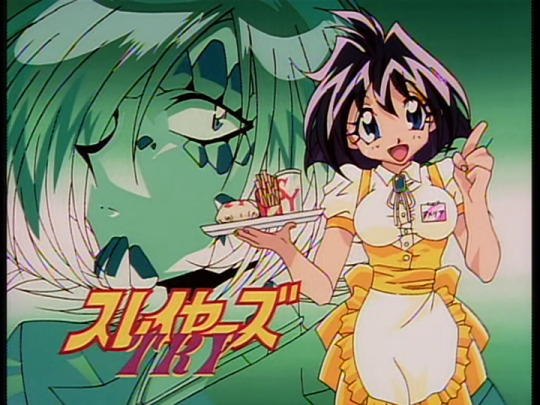

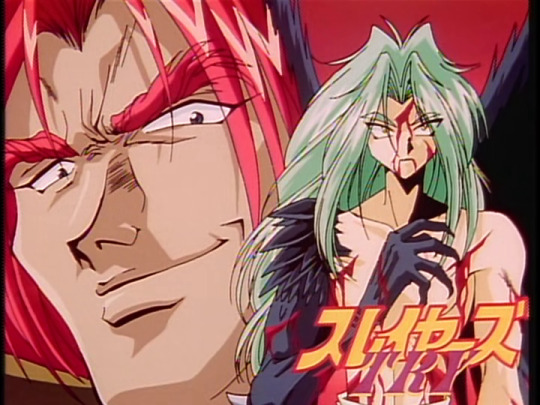


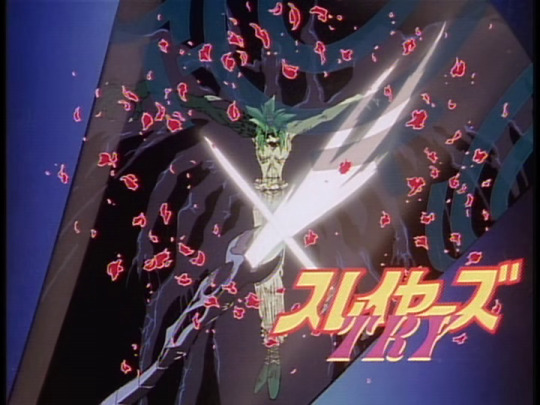







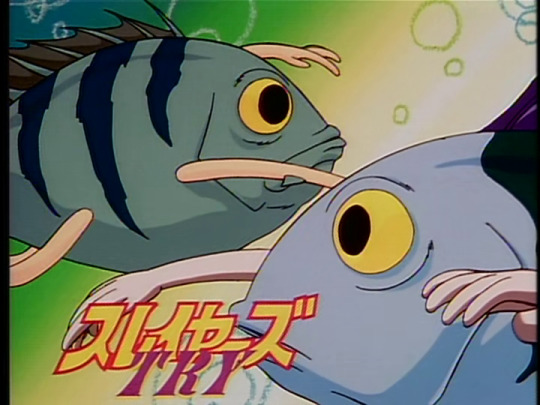

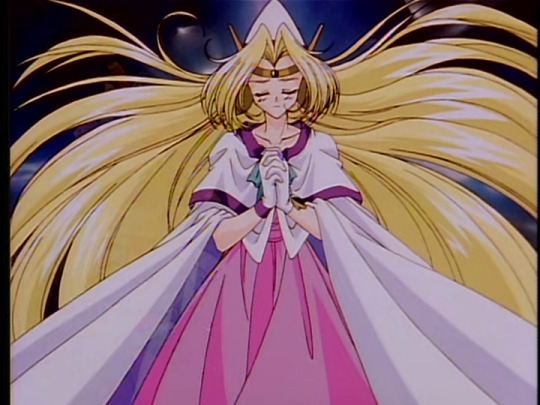

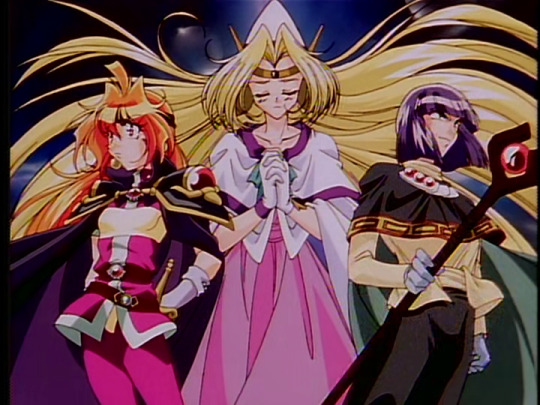

Slayers TRY eyecatches!
(While most of these eyecatches had some degree of movement/animation/overlayed effects, the final 3 eyecatches in the photoset had some degree of animation/unique frames that I found interesting enough to take multiple snapshots of each, haha)
#slayers try#eyecatch#slayers#lina inverse#gourry gabriev#amelia wil tesla seyruun#zelgadis greywords#filia ul copt#xellos metallium#jillas#chaos dragon gaav#valgaav#sylphiel nels lahda#uhh i'm blanking on the other characters' pictured names. i'll try and remember and come back and tag them#also got the chibis i'll post those separately
126 notes
·
View notes
Text

(from Slayers Collector's Edition #3 by Hajime Kanzaka, Rui Araizumi, Elizabeth Ellis)
#slayers#lina inverse#gourry gabriev#hajime kanzaka#rui araizumi#dragon slave#claire bible#zelgadis greywords#the slayers#amelia#The Mystic Sword of Bezeld#sairaag#King of the Phantom City#Fibrizo#writeblr#chaos dragon gaav
14 notes
·
View notes
Text

Happy Holidays @firebirddancing! I went with your request for art of Gaav (+bonus fighting with Phibrizzo) and had the thought that it might be fun to try and do something with their "beast" forms, so I just ran with that.
Trying to find a full body reference of Gaav's beast form was, uh, basically impossible, lmao. I took screenshots in the show and browsed Settei Dreams but couldn't find anything that clearly showed off what he had going on below the necks... I did a little research into depictions on Bune and then Wadjet as well, but in the end I just decided to keep it vague.
And don't worry about Phibrizzo killing Gaav- I think they're both just getting a lil' scuffed up. Dark lords are tough!
7 notes
·
View notes
Text

Comm of Chaos Dragon Gaav of Slayers for @firebirddancing!
16 notes
·
View notes
Text
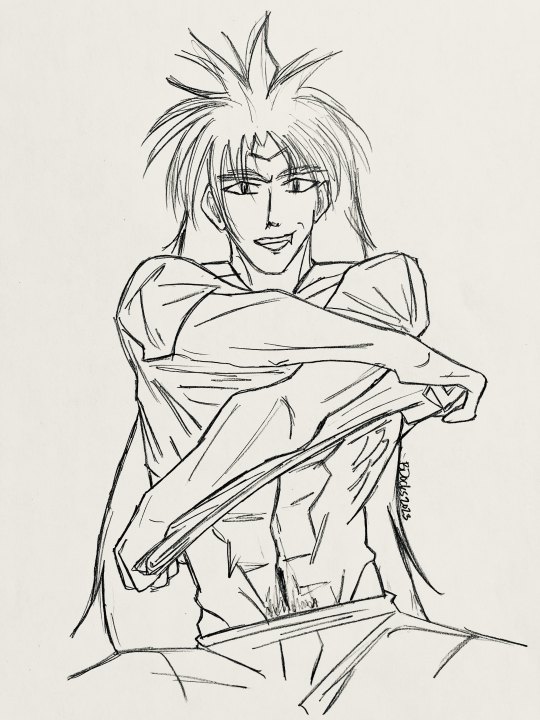
Sketchy Saturday: Gaav from Slayers
#スレイヤーズ#slayers#the slayers#chaos dragon gaav#gaav#chaos dragon garv#garv#90s anime#pencil sketch#sketch#sketchy saturday
7 notes
·
View notes
Text
Humans in the Middle
One of the themes in the Slayers novels that I love most is the struggle that humans have between their capacity for survival and their capacity for destruction. When faced with grief and adversity some, like Halciform and Zuma, fall to their demons while others, like Rubia and Lantz, continue to fight for life.
And life is a struggle, and Slayers does not minimize this. We see this play out over and over again in the second arc as various character have to confront their loved ones who have literally been transformed into demons. The victories our heroes earn comes at a tremendous cost and hurt.
I see people try to argue that Mazoku and humans aren’t so different because humans are also capable of the same horrendous acts that Mazoku are. And I feel that they are missing the point. Yes, humans are capable of horrific things and the novels do not shy away from that. The point of the novels is that humans have a choice, to either fight for life and survival or to fight for nihilation and destruction. This conflict plays out in practically every novel in the second arc. Meanwhile, Mazoku do not have to struggle with the conflicting desire for existence and nihilation. They are firmly for the latter and not capable of the former (and conversely, the Gods are firmly for existence). It is with humans that the battle between the two is waged and where the fate of the world seems to lie.
Gods and Mazoku represent opposite ends of the spectrum with humans in the middle. It is important to keep in mind that Gods and Mazoku do not represent the difference between good and evil, but between existence and nonexistence. The Gods are for existence at all costs, the Mazoku for nihilation. Yes, Mazoku do want to survive to win the battle but that is only because they want to achieve their ultimate goal: the destruction of everything. They basically want to murder and destroy everything they can before they turn the knife on themselves. Humans are in the middle, and it does seem that which side humans pick has a strong influence over which side wins.
While it may seem like human hubris to presume that humans are so important in this powerful war between gods and Mazoku, look at the fact that Mazoku are nullified by being reincarnated into human souls. We saw this with Gaav, and with Shabranigdu much seems to rely on whether his human host caves to him (Lei Magnus) or puts up a fight (Rezo and Luke). And Shabranigdu waking in Luke threw the Mazoku race into chaos because of human Luke’s conflicting desire for existence and nihilation.
We also see how those who are tied too closely to the Gods, like the Golden Dragons, may be neutralized by their own adherence to life at all costs. While dragons and elves would never consider messing with the Giga Slave, Lina does. You also see the difference between Milgazia’s approach to the situation when Hellmaster wanted Lina to cast the Giga Slave and Gaav’s. Milgazia did ask Lina if she wanted him to kill her to foil Hellmaster’s plans, but when Lina said no Milgazia respected her wish to live. Gaav, who was a Mazoku and who had been born repeatedly into human souls and no longer desired the destruction of the world, only could see one way out of the situation, and that was by killing Lina.
Existence is not easy, but in the first novel Lina challenges us to fight like hell for it. Yes, humans have destructive tendencies and can be capable of great evil much in the same way that Mazoku are. That is the point. We have parts of us that long for self destruction. Whether its drugs, alcohol, self mutilation, murder or giving up on a fight before it’s even begun. And we also have the capacity to fight back against this. And it is not easy. It is hard and it is a struggle. It is the person with a substance use disorder who avoids going to the bar on his way home from work. It is the mother who drags herself out of bed in the morning to get the day started when she would much rather sleep. It is the teenager who starts to paint when she has the urge to cut herself. It is the man who goes into a job he hates to pay the bills.
The fascinating thing about the Mazoku in Slayers is that in many ways they are our own self destructive tendencies manifested into living creatures that humans can fight. And one of the most frustrating things about life is how challenging it can be to find help but how easy it is to find ways to self destruct. In the Slayersverse the reason for this is because the Gods are literally kept out of the Inner World by the Mazoku barrier, thus making it far more easier to run into Mazoku than the Gods.
Slayers ultimately is a story about humanity persevering in the face of struggle and impossible odds. And given how scary the headlines are, this is a story that is very needed. Life isn’t easy. It never does get easy, but it’s still worth the struggle. The things that make life challenging (represented by the Mazoku) are not going to vanish. This is why the idea of Mazoku fighting to became a good is inherently uninteresting to me. Our struggles don’t do that. Meanwhile the Gods aren’t going to swoop in and magically make everything better, though there will be things to lighten the load along the way. Our social support is one of those things. One of the most powerful examples of this is with Zel and Amelia standing beside Lina when she went to get Gourry back from Hellmaster. In the end the struggle is worth it. As Lina ends on the 15th novel:
I had a feeling we’d get wrapped up in plenty more adventures on our way. We’d meet people. We’d lose some. We might even go through another tragedy like this one. But... I wouldn’t close my eyes to the sadness and the pain. I’d embrace them, and I’d overcome them. I would always face tomorrow with a smile.
10 notes
·
View notes
Note
for the choose violence askmeme: do these for slayers so that if i watch i can keep an eye out. 13. worst blorboficiation, 17. there should be more of this type of fic/art, and 10. worst part of fanon
worst part of fanon
There's a tendency to portray the mazoku lords as being like. One Big Quirky Happy Family, which I think is mostly just fans deliberately bein' goofs but does get portrayed seriously or semi-seriously enough for me to go "Hm."
Quick info dump explanation: There's the dark lord Ruby Eye Shabranigdu, the most powerful of mazoku, basically our equivalent of Satan and wants to destroy the world. He made five subordinates named (iirc) Chaos Dragon Gaav, Hellmaster Phibrizzo, Dynast Grausherra, Beastmaster Zelas Metallium, and Deep Sea Dolphin. Each of those five mazoku lords has made various subordinates of their own, referred to as the mazoku generals and mazoku priests. Xellos, general-priest of Zelas and her only subordinate, is also the only one who appears in the anime.
Anyway, there's a tendency to have it like "Shabranigdu is the grandpa, the five mazoku lords are his kids, and the generals and priests are the grandkids :)" with things like Xellos referring to the mazoku lords aside from Zelas as aunt or uncle. Again, this seems to be mostly a joke but you know how it is with fandom jokes that kind of start getting treated as actually how things are.
I don't particularly care for this because I straight up think it's OOC for them to relate to one another in a familial way or even have much affection for one another. The most I can see is the priests/generals having a sense of fealty towards and a desire to be valued by the specific lords that created them, as well as all mazoku-kind being like. Shabranigdu is the most powerful and the most important of us, his goal is our goal. But I don't see them hanging out or calling each other auntie or nephew or anything.
-I just wrote out this whole ramble and then I remembered that there's "Rezo is a sexual predator who probably molested his grandson" content out there. Actually that is the worst fanon. The Mazoku Bunch is fine, actually.
worst blorboficiation
tbh I'm not sure what blorboficiation means. The character the fandom most obsesses over??? Probably Xellos and/or Zelgadis, but I feel bad calling them the "worst" because I like them and think they're interesting. Good blorboficiation.
there should be more of this type of fic/art
[sweats desperately as i try to think of an answer that isn't the obvious]
Uhhhh I think I'd like to see more stuff of the various minor characters, from one-offs like Ashford and Miwan, to more secondary characters like Zangulus, Martina, or the Overworlders from TRY. Slayers in general I think does have an interesting world and I kind of wish it was explored more in fic, which tends to be very centered on shipping tbh and doesn't really prioritize other stuff.
-Related, this may be part of why I am not as bothered as other people by the main party becoming more supporting protagonist-ish in the later seasons.
3 notes
·
View notes
Text
Frequently Asked Questions
Provided below are some brief answers to the most frequently asked questions about Mazoku in general. A more detailed analysis of each topic in depth will be explored later in this document.
What are Mazoku?
Mazoku are a ‘demonic’ or ‘monstrous’ race of beings created from chaos, composed of spiritual ‘miasma’ (bad vibes), and attuned to ‘negative’ energy, which they consume to fuel their essence. They manifest a physical body in the mortal world while the bulk of their true spiritual body resides on the astral plane, which makes them extremely difficult to damage with conventional physical means. Most Mazoku possess a full range of human-like senses, as well as the ability to sense various types of magical and spiritual energy.
What is a Mazoku true form?
A Mazoku’s true form is the shape that their astral body takes when observed directly. Generally the more powerful a Mazoku is, the more eldritch and bizarre their true form is likely to be, while less powerful Mazoku often have more comprehensible and biological-seeming true forms. Less powerful Mazoku are also less able to project a body on the physical plane with an appearance far from their true form.
How are Mazoku created?
The history of the Mazoku race began during the Shinma war, when the five Mazoku Lords were created by Ruby-Eye Shabranigdo as pawns in his apocalyptic battle. From there, each of the Lords created their own army of servants, both weak and strong, from portions of the Lords’ own power. While the great number of Mazoku were created at or around the time of the Shinma war, the five Lords, as well as any sufficiently powerful servant of theirs can create new Mazoku by the same method at any time they please.
How many Mazoku are there?
In total there are a few thousand Mazoku below the Lords and their direct subordinates; weaker Mazoku are much more plentiful than powerful. There are five Mazoku Lords; Hellmaster Phibrizzo, Dynast Grausherra, Deep Sea Dolphin, Demon Dragon King Gaav, and Beastmaster Zelas Metallium. All of Phibrizzo’s high level servants were destroyed during the Kouma war; very few Hellmaster-aligned Mazoku remain or have been created since then.
Can a human or other creature become a Mazoku?
Any creature with an existence that extends to the astral plane can theoretically be turned into a Mazoku. The energy that would typically be used to create a new Mazoku is instead co-mingled with the essence of the existing creature, infusing it with dark energy. A fully spiritual creature must be significantly weakened for the energy to successfully co-mingle or dominate the originating spirit; and a living creature must be forced to the brink of death in order to be turned, so that its existence is concentrated on the astral side where the Mazoku energy can take hold.
How do Mazoku feed?
Mazoku consume and gain sustenance from the energy produced by the ‘negative’ emotions of humans and other sentient creatures, for example feelings such as fear, anger, sorrow and hatred. Mazoku are able to absorb this energy ambiently; it is not required that the emotions be directed at them. However, Mazoku often deliberately provoke these types of emotions in people in order to feed off of them. A Mazoku who is able to feed in excess of sustaining themselves will grow more powerful, and more able to create other Mazoku subordinate to themselves.
Are Mazoku damaged by positive emotions directed at them?
There is no evidence that Mazoku are directly damaged or harmed by positive emotions being directed toward them, although some Mazoku may experience revulsion at the idea or consider it ‘cringe’.
Are Mazoku damaged by relying on others? Can Mazoku cast spells?
As purely spiritual beings, Mazoku are existentially tautological– their existence and power is maintained by their own belief in their existence and identity. This means that anything a Mazoku understands as an existential challenge to itself and its ego can be damaging and diminish them in power and ability.
Newer and less powerful Mazoku do not have the power and/or have not had the time to develop a complex understanding of their own existence, and are thus easily damaged by even small threats to their ego and self esteem. Mazoku like these are unable to justify the need to rely on the power of others to their own ego, and thus are unable to do so without experiencing harm. Older, more powerful Mazoku who have developed a more complex and nuanced understanding of themselves are able to comprehend the necessity of relying on the power of another, and accept the humility of such a situation without damaging their own self-concept and ego.
Because casting a spell by its nature invokes the power of another being or essence, most Mazoku are unable to cast spells in any conventional sense, but many have innate abilities that mimic (or fuel) the spells themselves.
Can Mazoku feel/express/experience positive emotions themselves?
There is ample evidence that any Mazoku is able to experience self-directed positive emotions such as joy, satisfaction, calm, contentment, pleasure, curiosity, excitement, amusement and affection. Outwardly directed or altruistic positive emotions such as gratitude, inspiration, kindness and love are on a more tenuous ground, and a weaker or newer Mazoku may be completely incapable of experiencing these, considering them antithetical to their ego, and thus self-damaging.
How do Mazoku spend their time?
When not under direct orders from a superior, Mazoku generally spend their time pursuing either pleasure, or power or both, in whatever way suits them personally. More powerful Mazoku often have elaborate schemes and false human identities under which to pursue their personal goals and desires, while lesser Mazoku spend their time on more bestial and direct pursuits of brutal violence, petty irritation, and physical gluttony.
What is the Red World?
The Red World is the world in which the Mazoku were created. It is one of many created by the Lord of Nightmares, and presided over by Flare Dragon Ceipheed as the power of law and Ruby Eye Shabranigdo as the power of chaos.
What was the Shinma war?
The Shinma war was the war between Shabranigdo and Ceipheed at the beginning of the world. During this war the Mazoku and the dragons were created. The war ended when a critically injured Ceipheed tore Shabranigdo into seven pieces and sealed them in human bodies, trapping them in the human cycle of reincarnation. Ceipheed’s lingering consciousness went dormant, and the four Shinzoku (Draconic Lords) were created from his remaining power.
What was the Kouma war?
Three thousand years after the Shinma war, Hellmaster Phibrizzo led a push to resurrect Shabranigdo and begin the war for the world’s destruction a second time. During this war the Mazoku barrier was erected cutting off one continent of the Red world from the rest, and one of the Shinzoku, one of the pieces of Shabranigdo was resurrected briefly, and Aqualord Ragardia, was destroyed. Before his destruction Ragardia re-sealed the piece of Shabranigdo, and additionally weakened Lord Gaav significantly enough to seal him in a human reincarnation cycle as well. Most of Hellmaster’s and much of Dynast’s armies were destroyed, and despite continuing to maintain the barrier they had erected, the Mazoku race went into a period of retreat and cold war.
1 note
·
View note
Photo




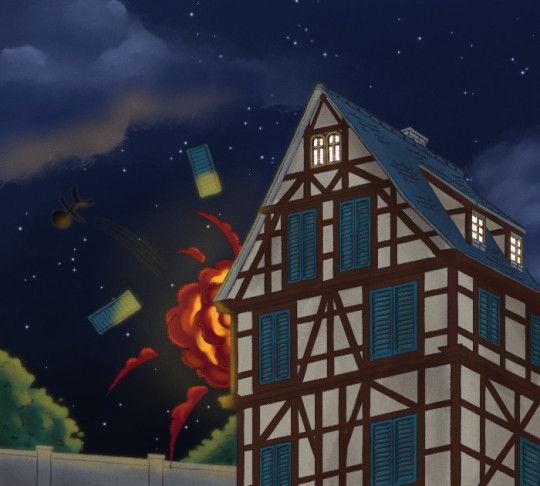

i’m back and i’m bringing this ugly thing with me
found sketches for this in a couple-year-old folder labelled ‘pillow fight gone wrong’ with no notes explaining why xelloss is even in the room (except for being a nuisance and causing trouble on purpose which is typical xelloss behaviour)
set in an au where gaav and lina talk things out and join forces against hellmaster
#slayers#スレイヤーズ#amelia wil tesla saillune#lina inverse#filia ul copt#xelloss#xellos#gourry gabriev#zelgadis greywords#chaos dragon gaav#gaav#garv#valgaav#valgarv#drawings and stuff#my stuff#mine: slayers
157 notes
·
View notes
Text




#chaos dragon gaav#gaav#slayers manga#slayers anime#inkdrawing#traditional illustration#fanart#illustration#copiccolors#copicsketch
4 notes
·
View notes
Photo
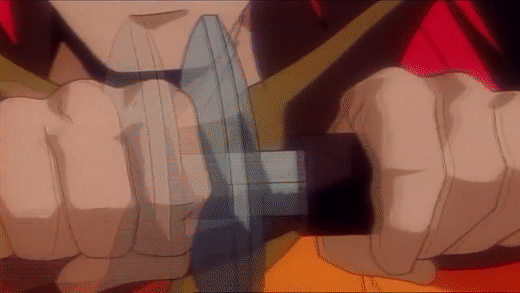
Gaav wins for best (worst?) entrance.
22 notes
·
View notes
Text
Book Review: ‘Slayers’ Collector’s Edition #3
Slayers Volumes 7-9 Collector's Edition (Slayers, 3) by Hajime Kanzaka, Rui Araizumi, Elizabeth Ellis

adventure
fantasy
magecraft
magic
swords and sorcery
My rating: 5 of 5 stars
The fascinating. The powerful. The corrupt.
Each shadowy entity wreaking havoc on this mortal plane has manufactured an array of ignoble philosophies to justify its dark deeds. Some of these philosophies are brutish and rudimentary (e.g., demons are creatures of ill omen, who feed off the ill intentions of others), and some philosophies are dangerously, monstrously complex (e.g., demons vying to reduce all existence to nothingness, for only in nothingness is there true calm). And yet, through it all, a tiny sorceress with a knack for being in the wrong place at the wrong time, might be the only person capable of keeping everyone in check.
SLAYERS Omnibus v3 includes the bookend chapters to the novel series' first major arc. This collection delivers all of the good stuff: strange and incredible spellcasting; clever but not over-the-top magecraft lore; villains who get their comeuppance; and new characters with plenty of issues all their own.
In book seven, Gaav's Challenge, readers are treated to a plethora of entertaining narrative elements, some of which regrettably snare very little time on the page. Lina and the gang trudge toward Dragon's Peak, at the edge of the Kaltaart Mountains, to access a remnant of the Claire Bible. The mythos surrounding the Claire Bible is immense, but filters into readers' purview with somewhat less flair than in the anime, but the reasoning is valid (e.g., there are other access points).
Conceptually, the Claire Bible is remarkable. In execution, however, it's wildly underused. The notion of a body of knowledge stored on a blithely accessible plane of reality, hoarded by those who have no use for it? The Claire Bible is a great example of how fantasy storytelling is both parallel to, and a paradox of, the real world's social, cultural, and political machinations. Lina, of course, is a genius, and she's keen to use it to figure out the universe's darkest magic ("I'm afraid I'm not an enlightened enough being to just roll over and die for something I don't yet understand," page 76).
This book is stuffed with a lot of action and a lot of lore. The fight at Dragon's Peak includes several full-demons, a revelation or two concerning Xellos's true nature, and a deliberate broadening of the novel series' narrative scope. Of the last of these, stepping onto the stage are Hellmaster (Fibrizo) and Chaos Dragon (Gaav), two of Ruby-Eye's five high-ranking demon servants. These are two seriously bad dudes with massive power at their disposal. For readers, the orientation and allegiance of each high-ranking demon is muddled (but assiduous note-taking might resolve this in due time). The good news at this point is that Kanzaka, the author, is dead serious about narrative continuity. Of less good news, this book has plenty of character dynamics that are easy for readers to lose track of (e.g., Amelia almost dies; Gaav isn't an egotistical villain on the lam, he's a sympathetic anti-hero).
In book eight, King of the Phantom City, it's back to Sairaag. Fibrizo artificially resurrects the City of Magic and craters Flagoon (ancient tree) in the process. His baiting of Lina, Zelgadis, Amelia, and also Sylphiel to tread into his so-called Hellpalace, of the City of the Dead, is typical villain stuff. And Fibrizo's snatching up of Gourry, as a hostage, makes the story's climax intuitively time-contingent. But as fans of the franchise likely already know, Fibrizo's ambitions are much, much darker.
The balance between books seven and eight is okay in the moment, but upon reflection, feels slightly off. Book seven is packed with information and intrigue; book eight, essentially, is the open-ended struggle to apply that knowledge. One imagines these volumes were slightly more difficult to consume, on their own, during their original printing.
In any case, book eight is a treat, insofar as spellcasting goes. Lina intuits the limitations of the powers of the higher-ranking demons, she discerns the network of power-sharing that enables her to cast certain dark magic, and lastly and most importantly, she learns the truth about the Lord of Nightmares. Lina does, in fact, "cast the perfected giga slave" (page 204). Controlling it, of course, is another matter entirely. Fibrizo's end is not to be missed.
Altogether, the book's conclusion is excellent, and lacks the fun but romanticized version the anime pulled together. Lina is a pragmatic character, but she's not so stubborn as to ignore what she learned from the matron of chaos firsthand.
Book nine, The Mystic Sword of Bezeld, begins a new story arc. Notably, the novel series pivots in a direction one might have wondered about for years considering the apparent fate of Gorun Nova, the Sword of Light. In the previous book, Fibrizo zapped the magical blade back to the astral plane.
The challenge this time around? Lina is blunt: "Gourry and I were presently on a quest to find him a new magical monster-carver," because, as she notes to the man himself, "I'm not getting a half-decent night's sleep until I find you a half-decent magical sword" (pages 218, 220).
Here, the story shifts onto a lighter beat and reduces the core cast down to Lina and Gourry. The slower pace feels good. And the stripped-down emphasis on characters fighting for one another, rather than fighting to save the whole planet, roots the novel in familiar territory. Sure, there are assassins clad in black. Sure, there are mysterious swords-for-hire hunting for the same treasure as Lina and Gourry. But the scope and scale are manageable.
And when the story is manageable, the worldbuilding can finally breathe again. Losing the Sword of Light gives Lina, as narrator, permission to chat about all of the other fantasy blades that populate the world (and possible swipe for Gourry): the Blast Sword, the Bless Blade, the Red Dragon Sword, the Elemekia Blade, the Dark Lord's Hungry Bone Staff, Ceifeed's Flare Dragon Sword (pages 209, 217). The idea that readers could spend the next few volumes sword-hunting with these two idiots, getting into trouble and feuding all of the way, sounds like an absolute blessing.
But as fate would have it, Lina gets in the way of someone else's carefully laid plans (again). For the umpteenth time, Lina barges in on a high-level demon's plan-in-action, decides she can't quite let things be, and resolves to fight her way through. Granted, the young woman has zero interest in fighting off a "hyperdemon" smothered with the curse of Raugnut Rushavna, but what's a woman to do? When an assassin is transformed by a demonic curse, and is then simultaneously possessed by a demon, the end result is a constantly regenerating creature of death and destruction.
SLAYERS Omnibus v3 is solidly entertaining. The author's increased focus on continuity gives the story a genuine sense of fated consequences (e.g., when a high-ranking demon dies, spellcasters can no longer call upon their power). Further, the book's higher emphasis on character mythology really shows, and portends greater revelations down the line (e.g., if Xellos is a creation of Greater Beast (Zellas Metallium), then who are the priests and generals to the other five servants of Ruby-Eye?). And some facets of the story are just too fun to ignore. Like how Lina's super-powerful big sister is known as "Knight of Ceifeed," but is stuck waiting tables back home. Or how Gourry, apparently, has a sixth sense for sniffing out demons. (Except, he's just too simple-minded to actually do anything about it. Twice in this collection, the guy just goes with the flow.)
The balance between what the narrative reaps and sows isn't perfect, but in reading these three books all at once, one finds the disparity is minimal. Reading about the wicked intensity Lina feels when weighing the ragna blade in her hands never fails to send a chill down one's spine, and the absolute shock of a double-Dragon-Slave still makes one giddy, but alas, there's always more story to tell.
❯ ❯ Light-Novel Reviews || ahb writes on Good Reads
#slayers#light novel#review#goodreads#lina inverse#gourry gabriev#dragon slave#zelgadis greywords#xellos#the slayers#hajime kanzaka#rui araizumi#elizabeth ellis#the claire bible#hellmaster fibrizo#chaos dragon gaav#king of the phantom city#the mystical sword of bezeld#raugnut rushavna#ragna blade
4 notes
·
View notes
Photo
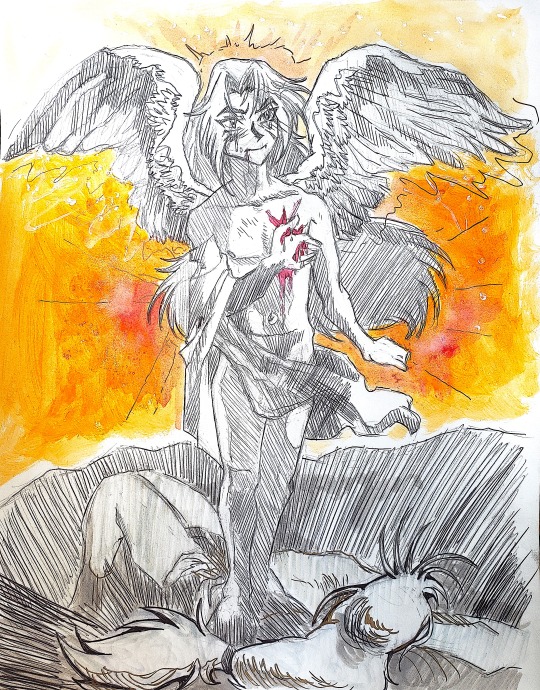
Valgaav remembers being drawn to Gaav’s chest for the first time.
“Don’t do that. I don’t want it, that … . stuff, anymore. I don’t want it.”
Sure I do.
I want to bathe in it. I want to get it in my pores, that sequence of proteins that birthed a new creation, that birthed me, that made me part of you, that very thing I claim to despise. that’s the worst part: I love it, and you, and I always, always will.
He remembers being the last of his kind, held to the chest of a pariah demon, and he didn’t push away. He basked. He basked in being the smaller one, ‘wouldn’t be so bad,” he said.
Resting his chin on ]the Chaos Dragon’s shoulder, and angling his cheek against his neck. His eyes close; this was the sweet surrender he really sought all along.
Gone, now: but he will dedicate his life to the sacrament of revenge.
------
Hey, @fujioshi-aruru! I’m your Secret Santa this year!!!! Because art history is my thing, and because Classical art and Greek mythology friggen’ slaps, I decided to quote a pose and composition from a Victory (Nike) standing on the body of a defeated foe. Only this is the inversion of victory, defeat, as Valgaav’s (pictured here as Val) savior has been murdered by Lina Inverse, and he’s out for vengeance. Paired it with a little angsty internal monologue from Valgaav’s POV, since you wanted both fanfic and fanart! And yes, I picked the “break y heart” prompt...sorry XD;;;;
Hope you like it! Ink, graphite, metallic markers, and salted India Ink.
29 notes
·
View notes
Text
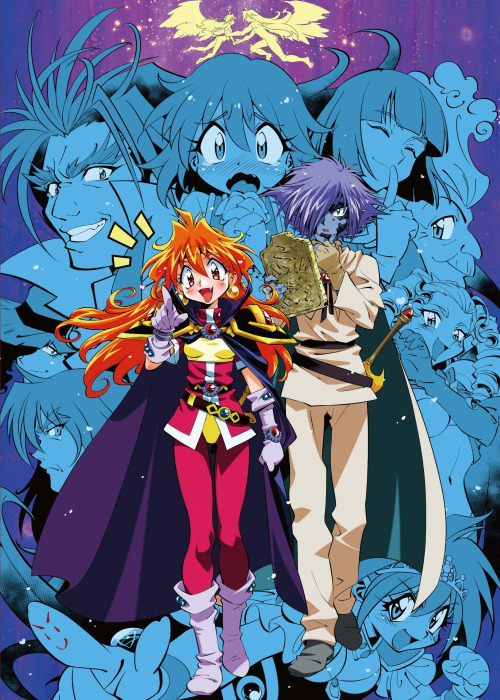
Notice Lina and Gourry at the top!
#slayers#slayers sunday#the slayers#lina inverse#gourry gabriev#lina x gourry#gourrina#amelia wil tesla seyruun#zelgadis greywords#mazoku lords#hellmaster#chaos dragon gaav#hellmaster phibrizzo#mazoku#xellos
170 notes
·
View notes
Text

Messing about today, sketchy Sunday. Gaav X Val from Slayres.
6 notes
·
View notes
Text
Megabura September 2022 Q&A with Hajime Kanzaka Translation
I ran the September 2022 Q&A through the DeepL translator. Still no updates on novel 18 sadly. Let’s see what else we’ve got.
● In the first volume, the Golden Demon King was described as "fallen from the sky." Given that the true identity of the Golden Demon King is the Sea of Chaos itself, what does this mean?
Is it simply a footnote created by people in Lina's world?
Or is it a metaphorical expression suggesting that the Golden Demon King is also a higher being on the divine side?
Or is it possible that there is in fact a "celestial" counterpart to the "Sea of Chaos" and that the "Sea of Chaos" is actually a differentiated part of that "celestial" entity?
Also, what is meant by the phrase "those who continue to hope for a return to their former selves" mentioned in the otherworldly apocalypse?
Does it mean that the countless worlds differentiated from the "Sea of Chaos" will return to nothing by being destroyed by the demon tribe, that is, they will return to the "Sea of Chaos," and eventually all the worlds will be destroyed and return to the pure "Sea of Chaos" to "return to the way they were"?
Or is there a "sky" as mentioned above, and returning to it is "returning to the way things were"?
(Sorry if this has already been answered somewhere else.)
KANZAKA: "It must be noted that everything that is described is 'the interpretation of the writer' and not the absolute truth of the universe.
How the world interprets it, how the writer of the magic book interpreted it, how Lina interpreted it, how the Water Dragon King, the Claire Bible, viewed the world before it was decomposed, is what makes the description different."
● When the demons fight against "composite beings of humans and demons," as they appeared several times in the book, does the demon tribe's rule of "you can't give your all to a human" apply?
Copy Rezo and Zuma-Seigram seemed to be more powerful than lower-middle class demons, and it seems that human demons have power equivalent to that of lower class demons.
Or, even if a person gains the power of the demon tribe, is it treated much the same as a human equipped with a sword of light (demon tribe)?
Kanzaka: "When demons fight against beings such as human demons, there is no psychological brake as you have pointed out.
It is possible to give one's all."
● In the second part of Slayers, Milgazia said that the demon tribe would never attack their human counterparts from the astral side.
In volume 7, Gaav made the statement that he thought he was going to attack from the astral side and kill them easily, but then Gaav
If he had attacked Lina and Gourry from the astral side, would Gaav have been weakened?
Kanzaka: "If he had launched the attack, he would have been weakened somewhat, but that should be considered a threatening line."
5 notes
·
View notes